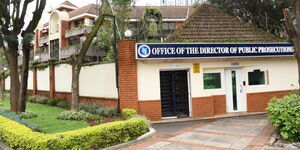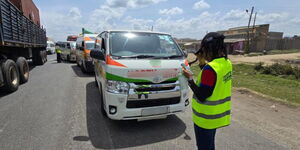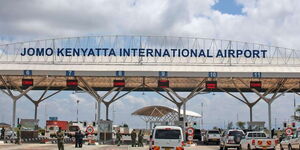The Kenya Airports Authority (KAA) has revealed the reason behind the temporary closure of one of the terminals at Jomo Kenyatta International Airport (JKIA) on Sunday July 20, following reports of a potential fire at the airport.
In a statement on Sunday evening, the authority confirmed that the airport's fire alarm system went off several times on Sunday afternoon.
The first alarm, according to KAA, went off around 2:55pm at Terminal 1C check-in area, prompting a response by the airport's Fire and Rescue team.
Despite initially containing the situation, KAA revealed that repeated activations of the fire alarm system prompted airport management to temporarily shut down the system and the terminal for further investigation.
Terminal 1C was subsequently vacated to ensure the safety of passengers and airline staff. According to the KAA, no flights were disrupted due to the minor disturbance.
“All flights scheduled for Terminal 1C have been seamlessly relocated to Terminal 1A and Terminal 1B,” the statement said.
Terminal 1C, which lies adjacent to Terminals 1A and 1B, primarily serves international departures for several foreign and regional airlines.
Amid concerns over the closure of the terminal, KAA insisted that operations remained normal, with safety systems being reviewed by teams on the ground.
Meanwhile, passengers have been advised to check with their respective airlines for any updates on terminal assignments as the assessment is ongoing.
The statement went on, “We assure the public that safety remains a top priority, and we appreciate the cooperation of all stakeholders during this time."
While the KAA is yet to disclose the actual cause of the recurring alarm, it could have been caused by several different reasons. Assuming there was no fire incident, a fire alarm can be triggered by non-threatening factors such as a sensor malfunction or faulty equipment.
Also, if fire alarm systems have been subjected to upgrades recently, glitches can occur, causing them to go off, unprovoked.
In rare but possible instances, steam, dust, or aerosol sprays can be mistaken for smoke by extremely sensitive detectors.












